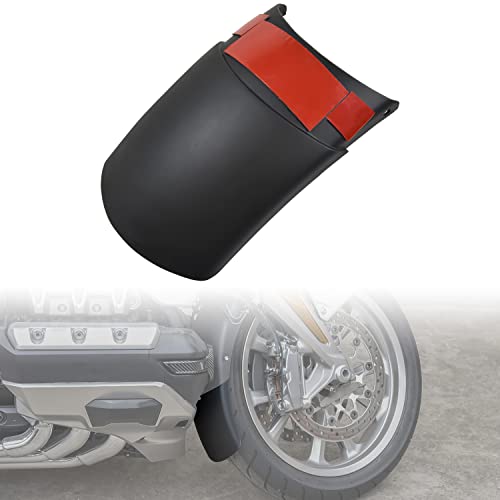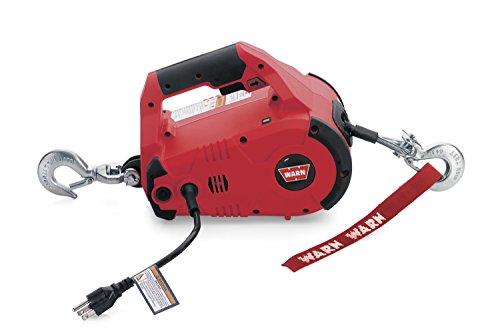The forum has been rather quiet so I thought I might do a what-if thread regarding the GL1200 engine ignition control module (ICU). Don't know if I have covered everything, but this is a topic that many may have been thinking about, not so much doing this type of project but what if this little ICU box fails.
What is Needed for Ignition Only ECU System – GL1200 ICU Replacement
Background
Ignition Control Module (ICU) for the GW GL1200 carbureted models are aging and will start to fail. The ICU controls the ignition timing. It is designed such that in 1st through 3rd gear the engine timing is electronically varied in relation to engine speed. In 4th and OD (5th) gears the gearshift sensor signals the ICU and the ignition timing is varied in relation to the engine vacuum.
The issue with this ICU is that an owner is not able to change the ignition tune. An owner can set the engine crank and camshaft alignment (“T1”) and check the ignition idle timing (“F1”). The OEM uses timing marks that are scribed on the engine flywheel. The auto industry and aftermarket ECUs do engine timing in degrees, generally BTDC.
The GL1200 engine idle timing is approximately 13 degrees BTDC, maximum engine timing is at approximately 3000 RPM at 38 degrees BTDC. The timing map for the ICU is based on the timing if a distributor was being used and is a good general approximation of what the engine timing should be; however, a newer ignition control unit that can be adjusted and tuned can further dial in the ignition timing requirements for better engine performance and operation.
What are the choices? An old, used ICU, or a new aftermarket ECU unit such as the Speeduino NO2C (Normally Over 2-Channel) unit is a good replacement alternative. There may be others available, but this Speeduino ECU unit is compact and about the same size as the OEM ICU, and is a good option for the DIY crowd. No affiliation, but I do like the open-source architecture.
With a new aftermarket ECU unit, you would need the tuning and analytics software for the new ECU unit.
Parts/Components for an EFI system:
Fuel injectors
Spark units (coil driver(s))
Coils – or facsimile
Crank/camshaft trigger wheels
Crank/camshaft sensors – Hall Effect or VR
IAT sensor
CLT sensor
MAP sensor
TPS
ECU
IAC components
Wide band O2 sensor unit with controller
Changing carbureted ignition to a more modern ECU configuration:
Coil driver
Crankshaft trigger wheel
IAT sensor
CLT sensor
MAP sensor
ECU
Hall Effect or VR sensor(s)
Wide Band O2 sensor and controller (optional)
Tuning and analytics software
Data required for new ECU
Coil driver
Coils
IAT/CLT sensors
MAP sensor
Recommended Changes
New coil driver such as Bosch 211 4-channel coil driver – data is available and widely used in the aftermarket EFI world
36-1 crankshaft trigger wheel – readily available and a go to crankshaft trigger wheel in the aftermarket EFI world
Honda OEM IAT/CLT sensors – sensor data can be easily ascertained
MAP sensor should come with the new ECU interface board – highly recommended
Crankshaft Hall Effect sensor – Cherry GS100701- recommended as there is no requirement to use a VR signal conditioning board
Discussion
The GL1200 engine is equipped with a crankshaft trigger wheel, and can easily be retrofitted with IAT/CLT sensors. Removing the OEM spark units and installing a new Bosch 211, or equivalent coil driver is a wiring project (can use the existing wiring). The MAP sensor is easily installed as well, and engine vacuum taps are readily available. The wasted spark system can be kept.
A wide band O2 (WBO2) sensor and controller would be an option, installing one and being able to monitor the engine AFRs would allow for additional ignition timing and carburetor tuning.
There may be a tachometer issue, but if the system is maintained as close as possible to the OEM design it should not be an issue.
Coil dwell will and coil voltage compensation will be an experimental exercise as there is no data available to dial in these two issue. The good news is that the recommended start settings are good enough to get a person back on the road.
I did an engine timing mod for my '85 FI model. I made an engine case timing pointer and set the #1 TDC position using the 36-1 crankshaft trigger wheel. This is located in the timing belt area, and on the left side. Works very well and is easier to use than the engine timing port. The 75mm crankshaft 36-1 trigger wheel would be preferred from a timing perspective in that each valley and tooth represents approximately 5 degrees of timing advance/******.
As I have mentioned, the OEM uses timing marks that are scribed on the flywheel, the new aftermarket ECUs use timing degrees. If this is a project that you would pursue, best to change to using engine timing in degrees.
This project would be good for the 1984 GW GL1200 as it has a different ignition setup than the 1985 to 1987 GWs.
Having mentioned the above, let’s have a round table discussion on the merits of such a change/project, are there other components required, and are there any takers. I am not going to buy a carbureted model as my ECU replacement project is keeping me quite busy.
What is Needed for Ignition Only ECU System – GL1200 ICU Replacement
Background
Ignition Control Module (ICU) for the GW GL1200 carbureted models are aging and will start to fail. The ICU controls the ignition timing. It is designed such that in 1st through 3rd gear the engine timing is electronically varied in relation to engine speed. In 4th and OD (5th) gears the gearshift sensor signals the ICU and the ignition timing is varied in relation to the engine vacuum.
The issue with this ICU is that an owner is not able to change the ignition tune. An owner can set the engine crank and camshaft alignment (“T1”) and check the ignition idle timing (“F1”). The OEM uses timing marks that are scribed on the engine flywheel. The auto industry and aftermarket ECUs do engine timing in degrees, generally BTDC.
The GL1200 engine idle timing is approximately 13 degrees BTDC, maximum engine timing is at approximately 3000 RPM at 38 degrees BTDC. The timing map for the ICU is based on the timing if a distributor was being used and is a good general approximation of what the engine timing should be; however, a newer ignition control unit that can be adjusted and tuned can further dial in the ignition timing requirements for better engine performance and operation.
What are the choices? An old, used ICU, or a new aftermarket ECU unit such as the Speeduino NO2C (Normally Over 2-Channel) unit is a good replacement alternative. There may be others available, but this Speeduino ECU unit is compact and about the same size as the OEM ICU, and is a good option for the DIY crowd. No affiliation, but I do like the open-source architecture.
With a new aftermarket ECU unit, you would need the tuning and analytics software for the new ECU unit.
Parts/Components for an EFI system:
Fuel injectors
Spark units (coil driver(s))
Coils – or facsimile
Crank/camshaft trigger wheels
Crank/camshaft sensors – Hall Effect or VR
IAT sensor
CLT sensor
MAP sensor
TPS
ECU
IAC components
Wide band O2 sensor unit with controller
Changing carbureted ignition to a more modern ECU configuration:
Coil driver
Crankshaft trigger wheel
IAT sensor
CLT sensor
MAP sensor
ECU
Hall Effect or VR sensor(s)
Wide Band O2 sensor and controller (optional)
Tuning and analytics software
Data required for new ECU
Coil driver
Coils
IAT/CLT sensors
MAP sensor
Recommended Changes
New coil driver such as Bosch 211 4-channel coil driver – data is available and widely used in the aftermarket EFI world
36-1 crankshaft trigger wheel – readily available and a go to crankshaft trigger wheel in the aftermarket EFI world
Honda OEM IAT/CLT sensors – sensor data can be easily ascertained
MAP sensor should come with the new ECU interface board – highly recommended
Crankshaft Hall Effect sensor – Cherry GS100701- recommended as there is no requirement to use a VR signal conditioning board
Discussion
The GL1200 engine is equipped with a crankshaft trigger wheel, and can easily be retrofitted with IAT/CLT sensors. Removing the OEM spark units and installing a new Bosch 211, or equivalent coil driver is a wiring project (can use the existing wiring). The MAP sensor is easily installed as well, and engine vacuum taps are readily available. The wasted spark system can be kept.
A wide band O2 (WBO2) sensor and controller would be an option, installing one and being able to monitor the engine AFRs would allow for additional ignition timing and carburetor tuning.
There may be a tachometer issue, but if the system is maintained as close as possible to the OEM design it should not be an issue.
Coil dwell will and coil voltage compensation will be an experimental exercise as there is no data available to dial in these two issue. The good news is that the recommended start settings are good enough to get a person back on the road.
I did an engine timing mod for my '85 FI model. I made an engine case timing pointer and set the #1 TDC position using the 36-1 crankshaft trigger wheel. This is located in the timing belt area, and on the left side. Works very well and is easier to use than the engine timing port. The 75mm crankshaft 36-1 trigger wheel would be preferred from a timing perspective in that each valley and tooth represents approximately 5 degrees of timing advance/******.
As I have mentioned, the OEM uses timing marks that are scribed on the flywheel, the new aftermarket ECUs use timing degrees. If this is a project that you would pursue, best to change to using engine timing in degrees.
This project would be good for the 1984 GW GL1200 as it has a different ignition setup than the 1985 to 1987 GWs.
Having mentioned the above, let’s have a round table discussion on the merits of such a change/project, are there other components required, and are there any takers. I am not going to buy a carbureted model as my ECU replacement project is keeping me quite busy.
































































